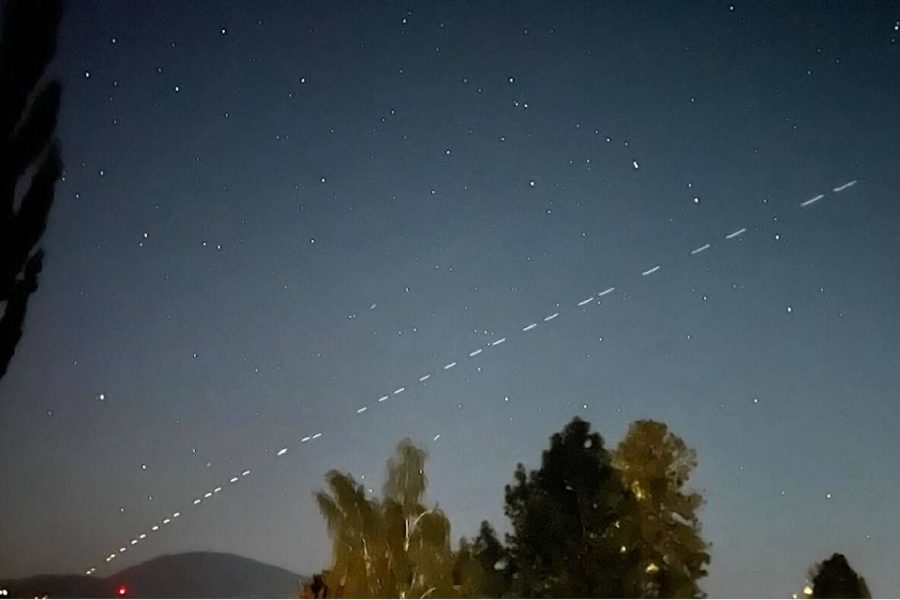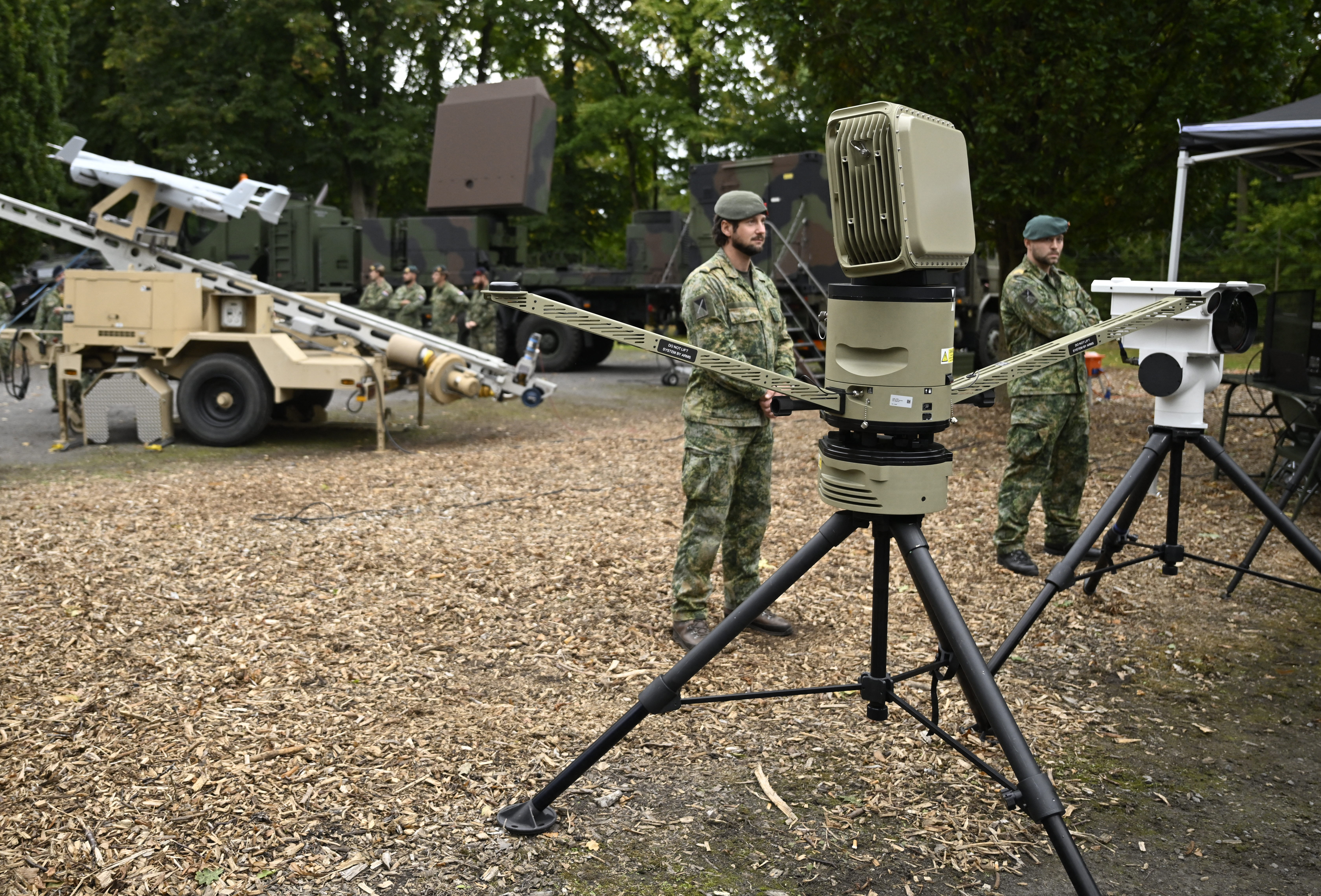
The first Trump administration moved to relieve the Space Force of its burden to monitor and warn civilian space operators about potential space traffic hazards. But now, just as the Commerce Department’s new Traffic Coordination System for Space (TraCSS) program is nearly ready, the second Trump administration is looking to cancel it.
The Space Force is pushing back.
Commerce zeroed out funding for TracCSS in its fiscal 2026 budget request at a time when the burgeoning number of commercial satellites is making the domain increasingly congested and potentially less safe. The administration argues the private sector should be responsible for tracking satellites and warning operators about potential collisions.
But the Space Force’s Space Operations Command (SpOC) says it will “continue to advocate” for transitioning the civilian space traffic management (STM) mission to TraCSS.
The Space Force has had the de facto mission to manage space traffic for decades, notes Charles Galbreath, a retired Space Force colonel and now senior fellow at the Mitchell Institute for Aerospace Studies. If TracCS goes away now, that mission will fall back to the Space Force at a time when the service’s military mission is already growing.
The Space Force and, before that, the Air Force Space Command, began the road to handing off space traffic management to Commerce and TracCS seven years ago. The objective was a system that relieved the Space Force of the civilian STM mission but that also would be better than existing capabilities.
“TracCS has Space Force data but there are also commercial sources, international sources, and sources from satellite operators,” Galbreath said. “That can all be fed into the algorithms, into a shared database, to do the orbit determination. And the more data you have coming in, the more accurate your orbital determination can be.”
Getting the Space Force out of the business of warning individual operators is key. “This allows our squadrons, both operational and sustainment, to focus more fully on our core mission of exploiting opportunities and mitigating vulnerabilities in the national security space terrain,” the SpOC spokesperson said in an email. “This is especially important as the space domain becomes increasingly contested by our adversaries.”
Shutting down TraCSS would save $55 million annually. Space advocates say that’s a small price to pay for space safety, and complain that doing away with the program will increase the chance of collisions in orbit and undermine America’s leadership role in international space.
A broad industry coalition of seven trade groups representing some 450 space companies are appealing to Congress to reverse the decision to cancel TracCSS. The groups include: The Commercial SSA Coalition, the Aerospace Industries Association (AIA), the Satellite Industry Association, the American Institute of Aeronautics and Astronautics (AIAA), the Commercial Space Federation, the National Security Space Association and the Space Data Association. “The U.S. space industry is very concerned that this move will introduce new risks to our operations and to our businesses,” said Audrey Schaffer, a space industry executive representing the Commercial SSA Coalition, which represents companies that offer space situational awareness services to private sector space operators. It’s notable that even the companies that hope to profit by competing with TraCSS are advocating for it.
SpOC and before it, Air Force Space Command, have long had the job of tracking objects in orbit—including operational and decommissioned satellites, as well as larger orbital debris—and sharing that data for free with commercial space operators. SpOC now tracks 60,000 space objects, according to SpaceTrack.org, the command’s web accessible orbital catalog
The first Trump administration decided in 2018 to move the STM mission to NOAA, the National Oceanic and Atmospheric Administration, which is part of the Department of Commerce and already had a regulatory role regarding satellites. TraCSS, the result of that move, began beta testing last year. It has been scheduled to take over the mission fully next year.
The transition would get the Space Force out of “being the Call Center for Space Safety for the whole world,” Schaeffer said.
Without it, Galbreath noted, the mission falls back on the Space Force as “an unfunded mandate.”
The SpOC spokesperson said the command “remains fully committed to the provision of data for the execution of spaceflight safety operations.”
The command will “continue to advocate for the completion of milestones established in support of Space Policy Directive-3 (SPD-3), which is critical to maintaining a safe, secure, and sustainable space environment,” the spokesperson said. SPD-3 is the 2018 policy directive that moved the mission to NOAA.
NOAA’s justification for zeroing out TraCSS in the budget pinned responsibility on the Biden administration, which it said failed to get the program going in time. “Under the prior administration, DOC was unable to complete a government owned and operated public-facing database and traffic coordination system,” the documents state. “In the [intervening] time, private industry has proven that they have the capability and the business model to provide civil operators with SSA data and STM services.”
A NOAA spokesperson referred questions about the cuts to the Office of Management and Budget. OMB did not respond to a request for comment.
But Richard DalBello, who headed the Office of Space Commerce at NOAA during the Biden administration and oversaw the set-up of TraCSS said that conclusion is incorrect.
“That’s the giant gap in the logic of the administration’s proposal,” he said. “They wish into existence this imaginary solution, which is that the commercial SSA operators will just do this, and that somehow magically they will get paid.”
DalBello said commercial providers may want to do this work, but they are not ready to do so. TracCS, meanwhile, is already in beta testing. He noted that the original 2018 SPD-3 policy directive came without funding, and that it was not until 2023 that funding for TraCSS was made available, a year after he joined the department.
“All things being equal, given that we started the program in 2022 ,the fact that we’re in beta already is pretty damn good,” he said.
It will take time for private services operators to develop offerings and satellite operators to determine which capabilities to pay for.
“How are you picking and choosing among all the companies who do SSA?” Delbello asked. “Some are good at observations in low Earth orbit. Others are good at higher orbits. Some don’t do observation at all, but they do really great software and analysis and prediction.”
Also still undecided: What firms can acquire and resell U.S. data. “There are dozens of global companies that can do SSA,” DelBello said.
Steve Jordan Tomaszewski, vice president for space systems at the Aerospace Industries Association, which also signed the letter to Congress, said civilian space situational awareness needs are very different from military requirements for space domain awareness (SDA). Tomaszewski, a two-decade Air Force veteran, who now serves as a Lieutenant Colonel in the Reserve, compared it to the difference between civilian air traffic control and an Air Operations Center. It wouldn’t make sense “if the Air Force got called in to operate every single air traffic control tower in our country,” he said.
He added: “Every time that the military has to take on an additional mission that’s outside of [its] scope, it’s a distraction and it’s taking resources away from the core mission.”
TraCSS “frees up the Department of Defense to focus on space warfighting because they’re no longer doing this very basic space safety mission,” Tomaszewski said.
Madelaine Chang, director of policy at the Satellite Industry Association said TraCSS was also modernizing what users could see. TraCSS capabilities impressed beta users, she said, largely because it was built new and applied the latest technology.
“It will be world leading,” Chang predicted—if the system survives the cuts.
The post Space Force Opposes Cut to Commerce’s Space Traffic Management Program appeared first on Air & Space Forces Magazine.

Software Modernization, Space, Technology, space traffic management, STM, TraCSS, USSF
Air & Space Forces Magazine
[crypto-donation-box type=”tabular” show-coin=”all”]












